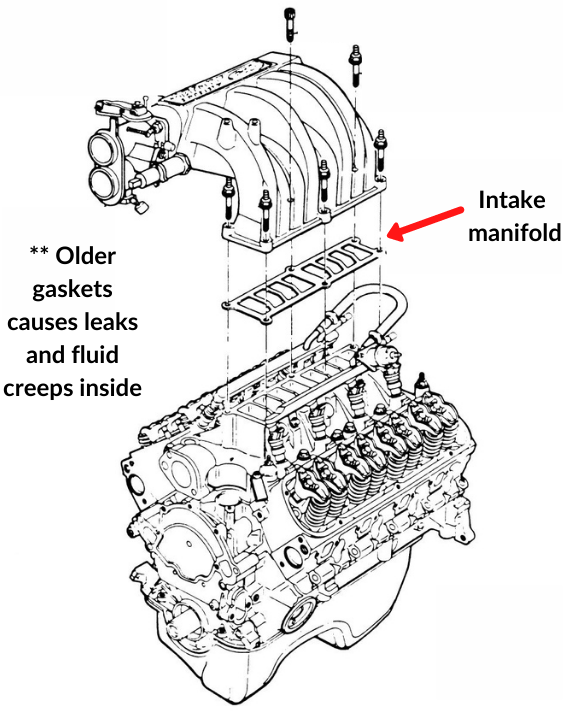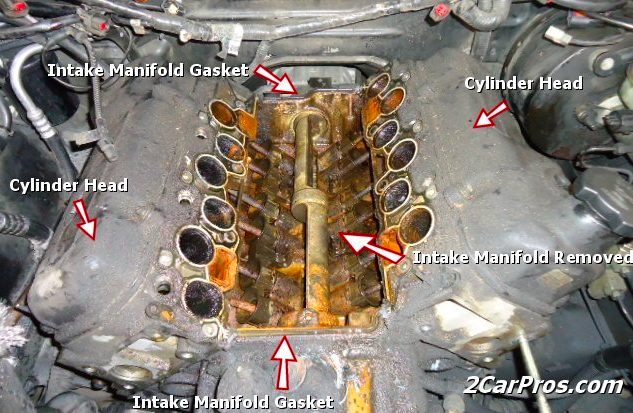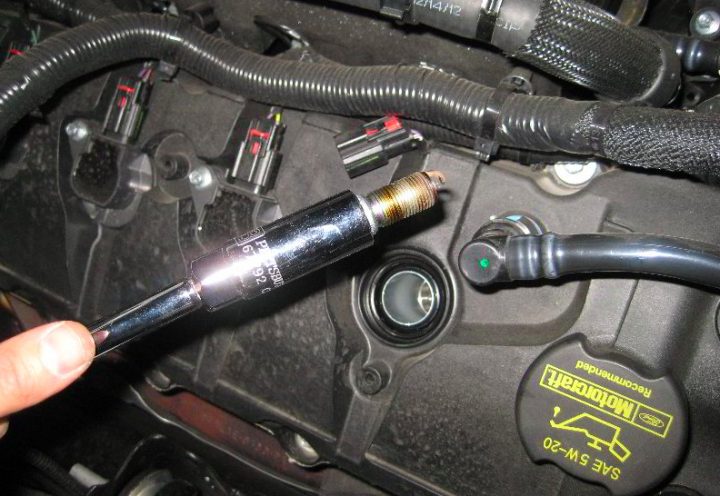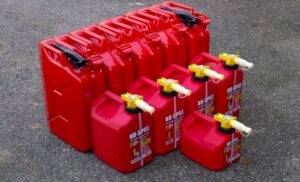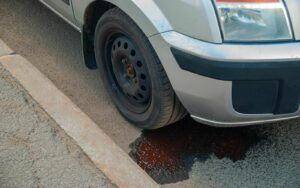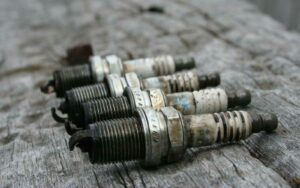Do you think water may be seeping into your engine? Water can wreak havoc on an engine. Engines operate by creating tiny timed explosions by compressing down gas vapor. This is a delicate process that can be easily ruined by something as simple as water.
This blog post will tell you how much water in a gas tank will ruin your car. You will also learn some interesting facts about gasoline and the environment. Did you know that only 10% of oil is used to produce fuel? The other 90% goes into food, plastics, paints, asphalt, and more!
The first thing you should do if your car starts sputtering or hesitates when driving is to check all fluids under the hood. It’s important to keep an eye on things like windshield washer fluid (or antifreeze), engine coolant (or anti-freeze), and brake fluid – but what about gasoline? If there’s too much water in it then it can cause serious problems for your vehicle.
This is when you hydrolock an engine. Water is not good for explosions as we clearly see when we go camping over the weekend or make foolish decisions during the fourth of July.
So what can water do to your engine? How much water in a gas tank will ruin a car? How much water can ruin an engine? These are essential questions that can cost, or save, you a lot of money. This is a classic case of an ounce of prevention is worth a pound of cure.
So let’s break down how and why water can build up in your engine and what you can do to prevent it.
Table of Contents
How Does Water Get Into A Car Engine?
When you turn the key in your ignition and start your car, most people don’t think about where their water is coming from. Water gets into a car engine without anyone noticing because of condensation.
If there is any water in the intake manifold, then air will not be able to get into the engine which can cause serious damage to expensive parts like pistons or valves. So next time you want to start your car, check for signs of condensation before turning on the ignition!
- Enter through your air intake
- Worn head gaskets
- Cracks in your engine
- Water buildup from your gas tank
- Condensation from extreme daily weather
Commonly water can get in the engine through the air intake. If you have a short ram intake or a cold air intake that can be more susceptible to water entering.
Can Rain Hydrolock An Engine?
Yes! Heavy rain, especially with high winds, can easily get under your hood and into your air filter. Rain and nature can build up inside your hood and cause some blockage or a spot to attract water.
On older vehicles, water can enter the cylinder compartment through worn gaskets or cracks in the engine block or through the engine cooling system i.e. radiator. Your engine has tubes that push radiator fluid all around to aid in cooling. If there is a crack in the engine block or any fluid lines there could be fluid going somewhere it does not belong.
Water can enter your gas tank in a number of ways. How much water in a gas tank will ruin a car? A lot less than you can imagine. Sometimes even less than a cup of water can ruin a car. It can be a serious issue if you are not aware, though most modern cars try to design this issue out of the gas line.
Water can enter your gas tank if you lost your fuel cap water can build up pretty quickly in certain climates. Someone could maliciously pour water into your tank if it is not locked. Constantly keeping your gas tank almost empty can cause condensation to build in your tank. There are probably lots of other ways.
Areas with extreme daily weather can cause a quick build-up of moisture and hydrolock an engine. And there could be enough build-up over a weekend to ruin your Monday or if you go on vacation.
So Really, How Much Water Can Ruin An Engine?
A single cup of water can do some damage to your engine. Water pushed into your cylinder compartment can cause damage quickly. The compartment only has so much room. The larger the cylinder, the more room you have for error potentially, though if the compression ratio is high this may hurt you more.
So essentially, a higher performance engine with larger cylinders may help you but the higher performance may hurt you. Not to mention a replacement cylinder head repair or even replacement on a HEMI will cost a hell of a lot more than on a 2.0-liter Civic engine.
Damaging your engine and ruining it can be different. A single-blown head gasket can be repaired in a day or two and will not cost you a lot. Ruining an engine is basically causing enough damage where to fix it costs more than the cost to replace the engine.
To add a cup of water to your engine may take a while. Rain spewing into your air filter can add up quickly. Someone pouring a cup into your gas tank can be done in a minute. Water can ruin your engine fairly quickly.
Will A Hydrolocked Engine Crank?
No, If you hydrolock an engine it will not crank because the water inside the engine is basically acting like a brick pressing against the cylinder head.
The space inside the cylinder head is reserved for the air/fuel mixture that explodes driving the cylinder away from the manifold cover. If there is water in this space instead of a precise mixture of gasoline and air the cylinder will not be able to move.
If there is no permanent damage to the engine you can remove the water from the cylinder compartments and get your engine running normally. But be very careful when doing this.
How Do You Get Water Out Of Intake Manifold?
Ever wondered how you get water out of an intake manifold? Well, it’s not easy. You have to take the engine apart and then remove the bolts on the intake manifold. Then you’re left with a lot of hoses that are connected to various parts of the engine which you have to undo in order to get rid of all the excess water.
It also takes a lot longer than anyone would expect! This is a job you should take to a mechanic or any other professional if you are hesitant. It can be dangerous for those who aren’t experienced with engine work.
- Remove the intake manifolds and blast air until everything is dry or free of water or let it dry out completely. Replace manifold covers and start the engine.
- Remove the spark plugs from each cylinder and crank the engine until water has been removed and only gas is coming out.
Caution: Cranking an engine without sparkplugs can be simple and easy. Though you should take heed if you try it. There may be other water damage that may cause additional issues to your engine. Use extreme caution only at your own risk.
Manifolds are hard to deal with, but now your car will run better than ever because there wasn’t any more water blocking things up inside. So if anyone has an issue with their engine or anything like that they should definitely take their vehicle in right away before something bad happens.
How Do You Prevent Hydrolock?
Yes, if you hydrolock an engine it can be prevented easily. Prevention is almost always much cheaper and easier than fixing hydrolock. Using good practices can overflow (no pun intended) to other parts of your vehicle that can help your vehicle’s longevity more than average. Here are some common and easy practices:
- Lock your fuel door or gas cap
- Keep your gas tank relatively full or fill your tank up completely each time you fill up
- Buy only quality aftermarket air filters or performance mods such a short air intake or a cold air intake
- Clean your engine bay monthly or every couple of months
- Monitor any leaks or cracks in your powertrain
- Buy a snorkel if you go off-roading and encounter deep puddles
- If you live in a climate that has big swings in the temperature you should monitor engine performance and use additives regularly if there are large gaps in the frequency of vehicle use.
Note: There are multiple ways to get water out of an engine. The easiest and safest way is to take it to a shop and have them do it. If you have enough water in your engine to cause it to hydrolock clearing it should be done only if you know what you are doing. Otherwise, you can brick your engine.
Water can ruin an engine. That is a fact. You can hydrolock an engine relatively easily. Just drive through a deep puddle for a while. Boom! You have sucked water into your engine and now it is stuck inside.
Luckily if you are this foolish or daring there are ways to easily remove the water from your engine before it ruins it. With a little know-how, it will only cause damage to your psyche. Hopefully, you have learned something and will give a little more thought to what would happen if you are in a situation where you may get water in your engine.
When you fill your car’s gas tank, water can get into the fuel line and ruin it. It doesn’t matter if this happens in a parking lot or on the side of the road–if there is any evidence that something has touched your gas tank recently, don’t put anything else inside!
Main Takeaways – Water In A Gas Tank Will Ruin A Car
The damage to fuel lines from water is irreversible and costly. If you have already added gasoline to an empty gas tank, remove all of the gasoline by siphoning out as much as possible with a hose before turning off your engine for about 10 minutes (this will allow enough time for most of the remaining vaporized but unburned gas molecules to escape).
While waiting, start wiping down exterior surfaces around where you were filling up with gasoline to remove any gasoline residue.
Once you’ve allowed the tank to dry, try adding only water (to check for leaks), and see if it will hold pressure. If so, start your engine to test whether the fuel system is intact after running the engine for about 5 minutes to get rid of any lingering vapors from unburned gasoline. If your tank passes this pressure test, you should be able to add gasoline again without harming the fuel system.
You can refuel at stations that have special no-water tanks; these stations still shut down when other customers fill their cars, but they allow customers in a hurry to fill up before others and minimize exposure to water vapor vaporizing in their pumps.
Always check the oil, antifreeze, and windshield washer fluid levels after driving through a puddle at high speed or encountering any other conditions that could lead to exposure.
To avoid similar problems with your car’s transmission, keep it out of standing water whenever possible. Try not driving through puddles, and never cross running water unless necessary. Also, avoid parking on dirt or gravel roads if your drive wheels are likely to travel through the mud.
If you park so that these conditions could be an issue, try not to let any snow cover the car’s undercarriage where it might melt — this would create standing water under the car.
Thanks for reading and stay dirty


